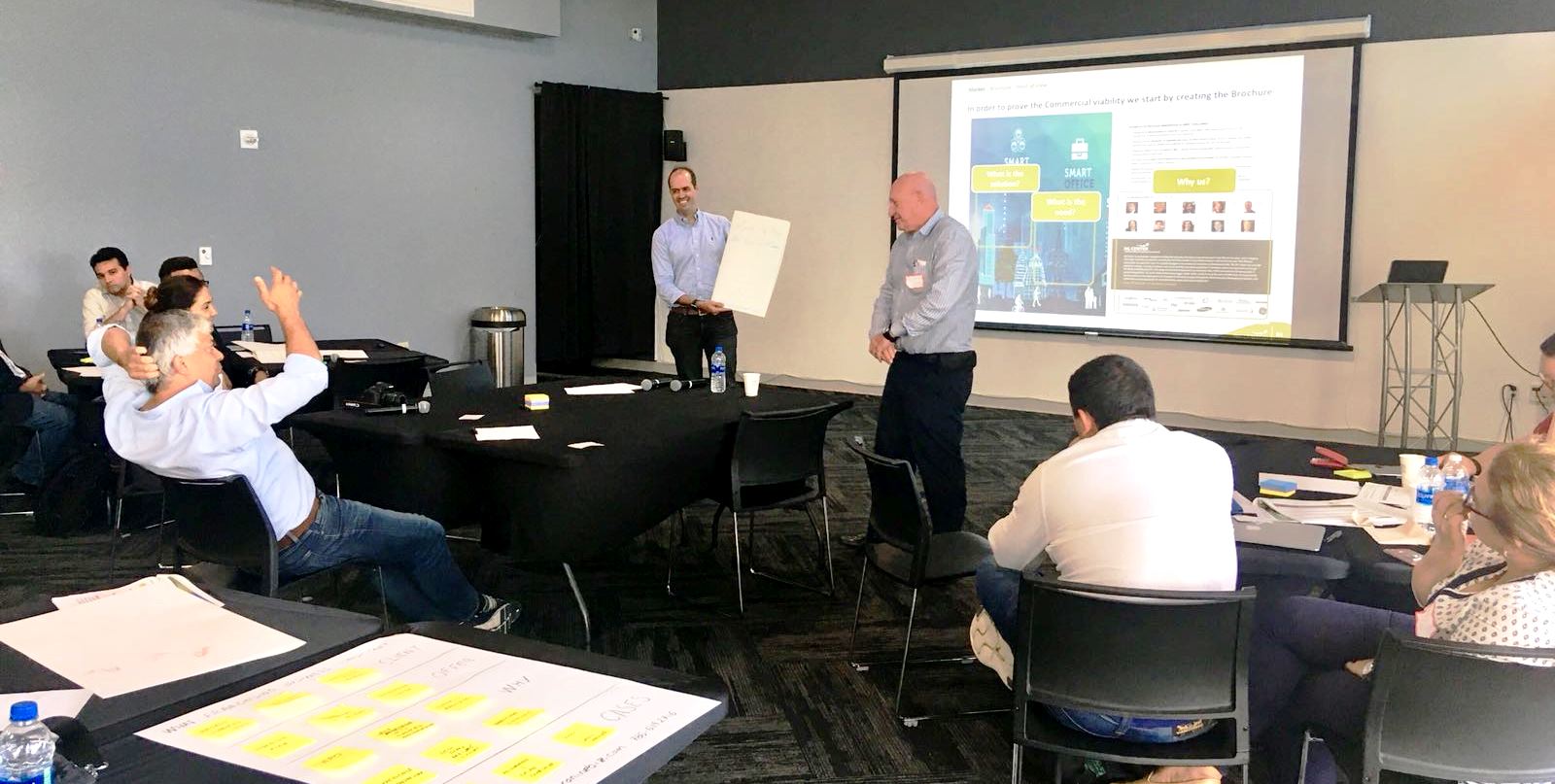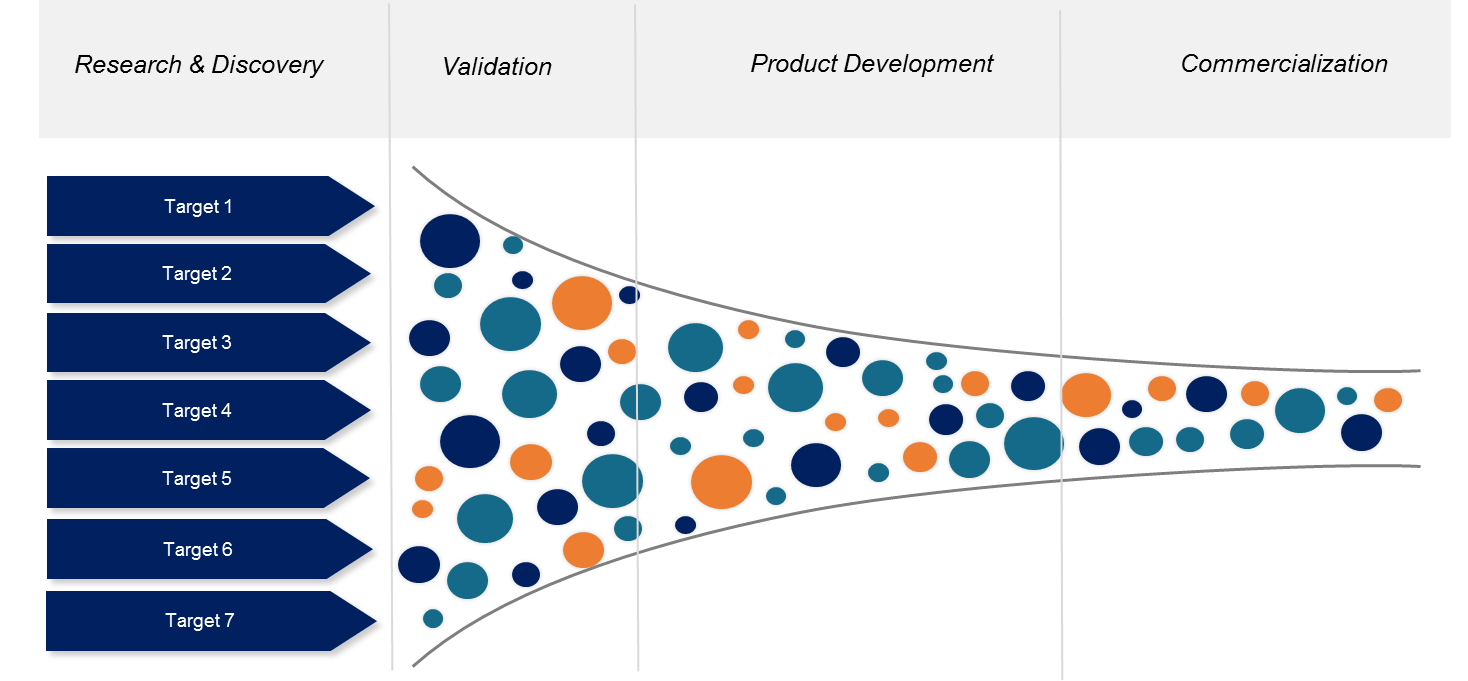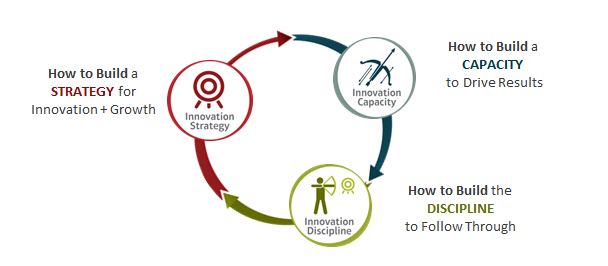Why is a good innovation portfolio important and what does it look like for a company?

Volume II, Issue 2 August 1, 2018
Why is a good innovation portfolio important and what does it look like for a company?
An innovation portfolio maintains the delicate balance required for companies to remain viable years into the future by creating change today. While survival through adaptation / innovation has always been the law of the economic jungle, corporate cultures (and many of the C-level executives who shape those cultures) often prefer (through choice or inertia) to put off change and the news that might prompt change for as long as possible. If your company has chosen to adopt an innovation portfolio, it’s made the adjustment to this fact of modern business life: today’s timelines and dizzying market churn are moving too quickly to allow innovation to bubble up by chance or to be put off until some smart person in the C-suite has an inspiration. The way to plan for innovation is to develop an innovation portfolio.
 Dr. Hitendra Patel at the IXL Center, Miami.
Dr. Hitendra Patel at the IXL Center, Miami.
Why is Innovation Portfolio Important?
Having an innovation portfolio means that you’re being realistic about planning for a prosperous future. This portfolio has both short-term and long-term implications for business concepts and processes. For products or business concepts in the short-term, the portfolio allows companies to entertain many experiments at once, moving them towards a stage-gate process or other form of evaluation system that anticipates inevitable failures in experimentation. In the long term, an innovation portfolio allows companies to sustain energy over time by planning years in advance to maintain customer loyalty and interest in the company. New, innovative business concepts from the portfolio are staggered over time because imitations and substitutes to your new offering can emerge quickly. In short, your innovation portfolio helps you to sustain energy in the marketplace through changing times.
That energy and dynamism also can be spread internally through innovation efforts. Successful innovation efforts can encourage good business habits/processes that keep the company open to using the latest effective tools and approaches to all of their work. If the operations department conducts successful experiments using artificial intelligence, for example, this innovative approach should generate new values such as increasing efficiency, looking for deeper insights to support decision-making processes, and getting new offerings more quickly to the market. Benefits to the company of these new processes can be measured and implemented at scale much faster than before.
All of this energy is channeled to productive ends by making sure that innovation efforts large and small are somehow aligned with an important strategic goal. This scrutiny is not meant to straightjacket innovation too narrowly or to make potential innovators wary of breaking a company rule. Instead, imagine this alignment like a sail on a boat catching the strategic wind just right.
Making Innovation Real: Strategy, Capacity and Discipline. IXL Center Model.
Organizational Considerations in Getting the Innovation Portfolio Started
In keeping an innovation portfolio robust and productive, a balance has to be maintained in channels of communication and allocations of responsibility between upper management and the rank-and-file. The portfolio has to be shaped primarily by management who should develop criteria for funding of initial innovation efforts with some seed money (efforts that are aligned, of course, with the company’s strategic priorities).
While the overall character of an innovation portfolio should be shaped from the top-down, the fielding of ideas should happen from the bottom-up, or from “the grassroots.” There are two major reasons for this. First, there are too many changes in the marketplace for upper management to know everything that’s important to their company; therefore, there must be some delegation of innovation initiation and implementation to the middle and lower tiers of the company. Second, this arrangement allows for further penetration of entrepreneurial spirits at the front line, which gives energy for more sustainable change in the long-term.
There are a few ways one might encourage and sustain the gathering of ideas for an innovation portfolio. One might be careful to make sure ideation is multi-sourced – from internal and external partners. (The earlier this process starts, the better, to ensure that partners can start thinking about execution as ideation begins.) Internal partners could be cultivated through, for example, an online system for the input of ideas and concepts. This online system could communicate ideas that apply across the organization while also unearthing valuable ideas that sometimes have trouble emerging from an originating group.
To ensure that employees actually participate wholeheartedly in these kinds of ideation projects, management has to make sure that employees trust that these efforts are sincere and not just charades to make management look like it’s interested in employee input. To build this trust, companies need to create a transparent and credible review process that makes ideators feel that their suggestions are being taken seriously. This means that their ideas are reviewed critically and evaluations are adequately explained and eventually delivered in a timely fashion. The end result of this process should be that some of these grassroots ideas are actually taken up in some form by management or entrepreneurial units.
What Should an Innovation Portfolio Look Like?
While every company has organizational and cultural peculiarities that may shape their innovation pipelines in unique ways, there are some general approaches that can be applicable for most companies.
• A good innovation portfolio looks like a “drug pipeline.” After qualifying each idea as worthy of some company resources, each idea can advance, start, or stop when appropriate. (These decisions are usually determined by feasibility, market demand and alignment with a company’s strategic vision.)
• This portfolio is very fluid in nature and should not be too rigid in the early stages of ideation. At the same time, innovation initiatives and activities should all have clearly defined stages with a strong endpoint to measure success before advancing to the next stage.
• As in a pharmaceutical pipeline, the goal in cultivating the innovation portfolio is overall success for the company, not the individual success of any particular project. One way to cultivate this cooperative ethos is to have employees working on more than one major innovation project at any given time. If they are focused on just one project, they may hide flaws or shortcomings they may discover in that project because they could risk losing their jobs.

Innovation Portfolio as a generic pipeline process. Created by Alice Chung, Senior Manager at Genentech Business Operation.
The Serious Fun of Maintaining an Innovation Portfolio
Coaches of high-performing sports teams understand that winning consistently requires that the athletes feel motivated not by pressure but by the love of the game. To win a championship requires effort, of course, that might be measured in many ways – a number of miles run during a soccer game or rebounds gathered on a basketball court. But the effort truly pays off when a well-practiced team is able to execute on-the-fly with open minds and optimistic spirits.
Likewise, for companies seeking to win through maintaining an innovation portfolio, executives need to teach the rules of the game and the details of execution while allowing their employees freedom to express their individual talents in their own ways. This translates into complementary responsibilities for management and employees in maintaining an innovation portfolio. On one hand, management must ensure that the innovation portfolio align with strategic goals without being too stringent, which could discourage creativity. On the other hand, employees should feel free to think “out of the box,” but should know that their efforts are only worthwhile if they eventually help to grow the company in some way. Both management and employees may find the greatest freedom can be actualized within some defined set of rules so that individual teams working within an innovation portfolio find that their work meshes strategically and does not end up working at cross-purposes.
While the content of this edition of The Innovator newsletter focuses on important general principles that help to keep an innovation portfolio robust, the next edition will focus a little more on the practical considerations in executing on any particular innovation. While we have extolled the virtues of gathering ideas from internal and external sources, the proof of the pudding is in the eating: How do you involve all units within your organization and partners & networks to assist with driving innovation from idea to market? We’ll find out next month!
We’d like to thank Alice Chung and Alessandro Rimassa for their contributions to this edition of The Innovator.
_________________________________________________________________________________
ABOUT THE AUTHORS
Mark Rennella. Senior Editor at IXL Center
Mark Rennella is a writer, editor and teacher who uses a historical perspective to examine and unpack today’s complex business trends. He has authored popular Harvard Business School cases on a variety of topics as well as a book on leadership, Entrepreneurs, Managers and Leaders, co-written with Nitin Nohria and Anthony Mayo (Palgrave Macmillan, 2009). Mark’s many books, articles, business case studies, and collaborative writing endeavors have garnered him critical praise from historians, academicians, and business leaders alike. In 2001, Mark earned a PhD in American History at Brandeis University.
Dr. Hitendra Patel. Managing Director of IXL Center
Dr. Hitendra Patel is the Managing Director of the IXL Center and Chair of the Innovation and Growth Program at the Hult International Business School. He has coached new emerging leaders and managers of new and fast growth businesses.Hitendra was a senior leader and co-founder of Monitor Group’s Innovation Practice and was responsible for Asia and Latin America. Prior to Monitor, he was a senior manager at Arthur D. Little. As a management consultant, he has made lasting impact with all types of companies by helping them identify new engines for growth and develop their own capacity to innovate.

